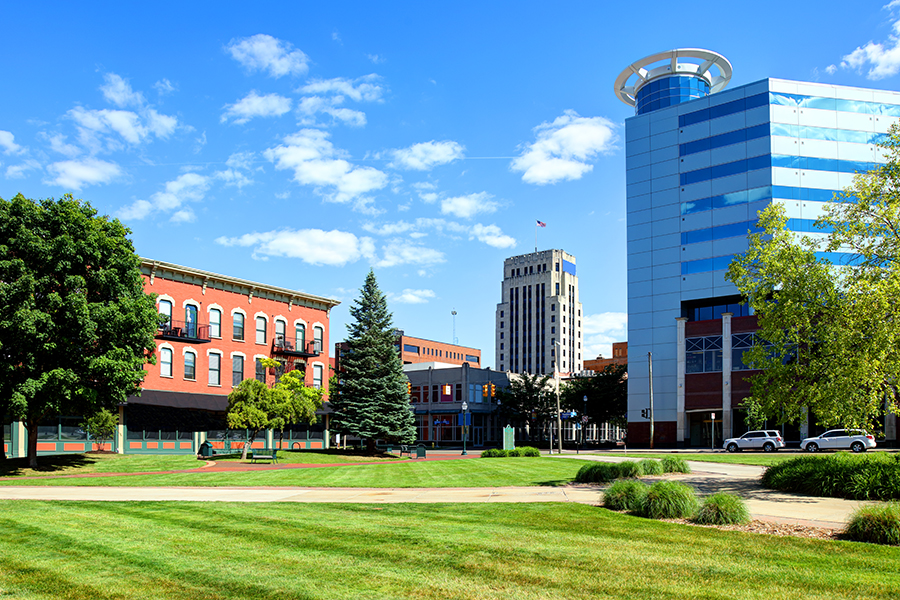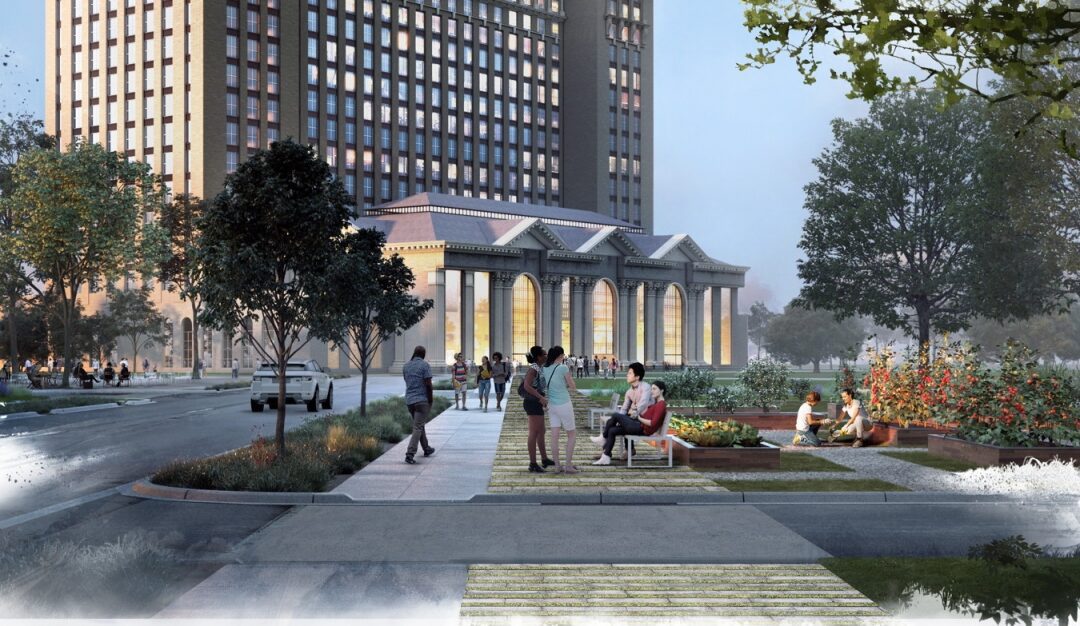Michigan Deserves Vastly Better Train Service
This page is a joint project with the Michigan Association of Railroad Passengers.
You Can Help Put Fast Trains Into Michigan’s Plans.
Michigan needs a flourishing network of fast, frequent, and affordable trains.
There are incredible opportunities, and there is strong demand. Few states can match Michigan’s combination of existing assets and untapped potential.
A vibrant network of modern trains will build a strong economy, attract workers and investments, slash greenhouse gas emissions, and put Michigan at the center of a U.S. transportation revolution.
Learn More About the Quality of Train Travel
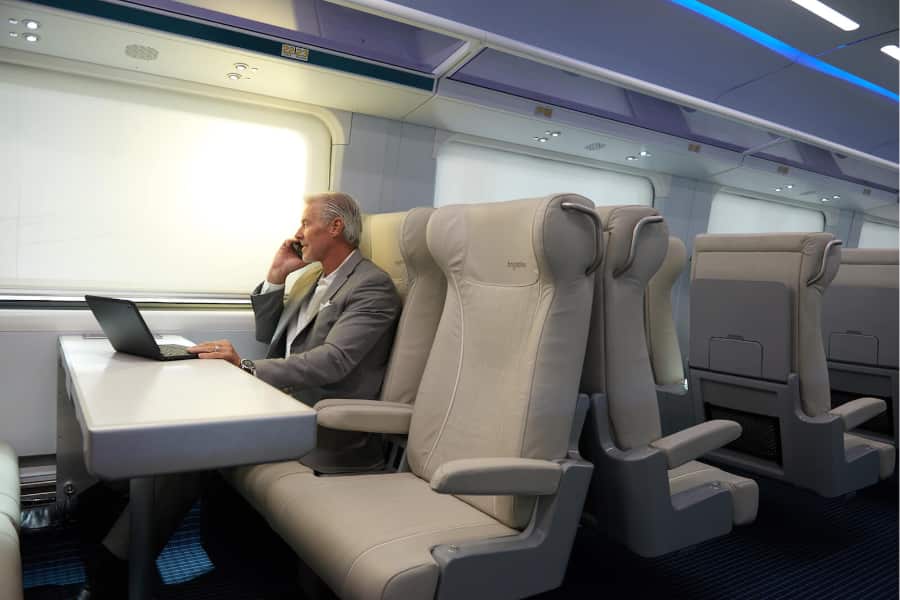
Trains are a comfortable and productive way to travel.
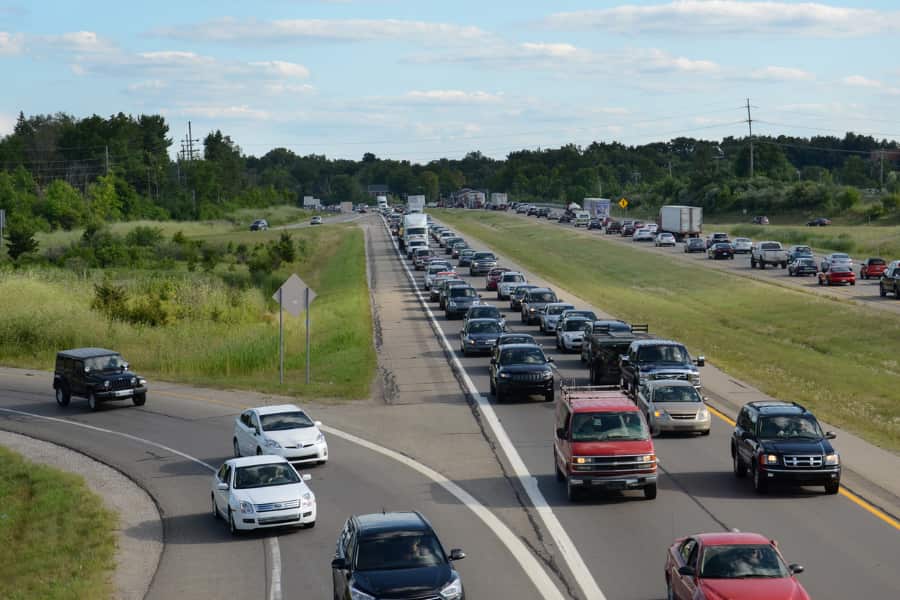
Help insure that Michigan’s new transportation plan doesn’t offer just more of the same.
Let’s Get Fast Trains Into Michigan’s State Transportation Plan
The Michigan Department of Transportation recently updated its state long-range transportation plan.
Their stated goal for the “Michigan Mobility 2045 Plan” is a 25-year plan for transforming Michigan’s transportation system.
A truly transformative plan will include a dramatic expansion of the state’s rail network.
Together, we can ensure that trains play a big role in strengthening Michigan’s economy—if enough people like you get involved.
Here’s Our Big-Picture Vision
Communities in Michigan should have fast, frequent trains coordinated with expanded bus lines.
This robust blend of travel modes would offer frequent service and well-coordinated connections and transfers, giving riders flexibility.
Trips to every part of the state—as well as Chicago, Cleveland and Toronto—should be fast, affordable, and convenient.
Michigan needs a gold-standard rail network that shows the power of trains to drive economic development and promote environmental sustainability.
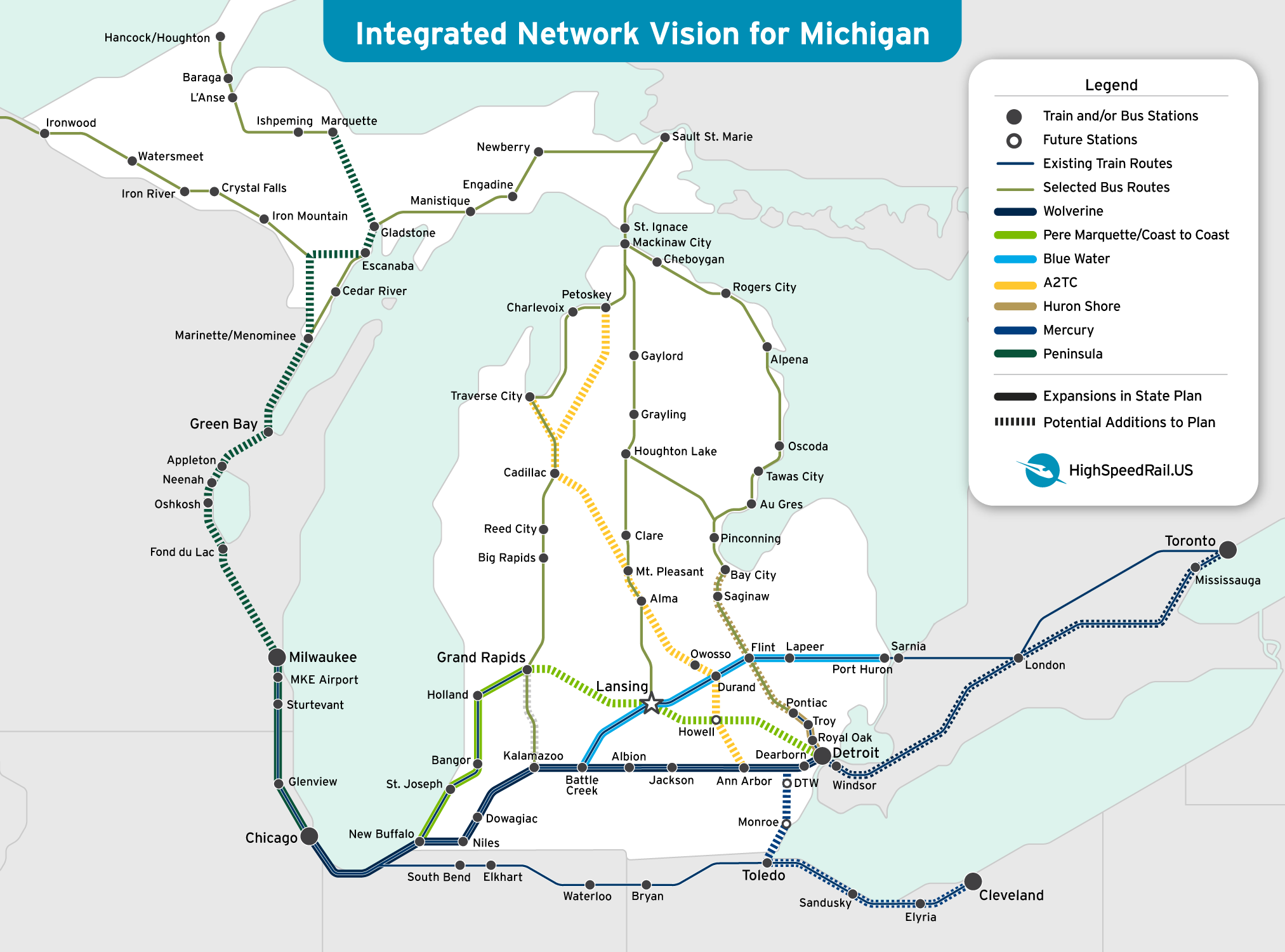
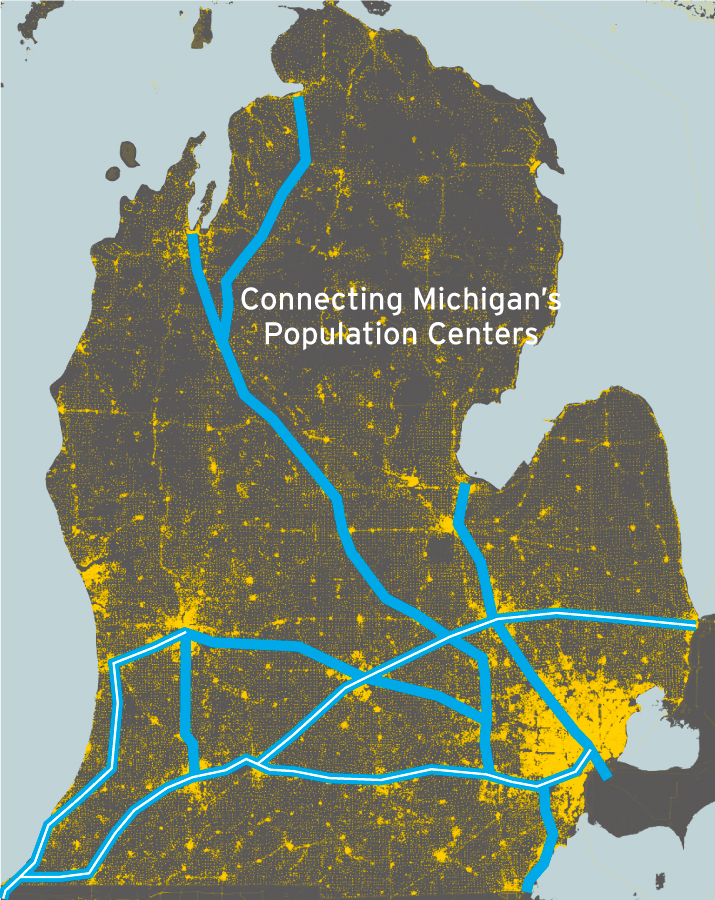
A Great Foundation
The basic elements are already in place. Now it’s time to build on them and create the kind of modern rail network Michigan needs and deserves. Consider:
- About 80 percent of Michiganders live within 25 miles of an Amtrak station; 85 percent live within 50 miles of one. That population density near train stations means Michigan’s railroads are a remarkable, but under-utilized asset.
- Current rail lines serve a mix of bustling small and mid-sized communities, tourist towns, and college towns. All of them will profit from being more connected.
- There is already a dense network of feeder buses connecting less-populous parts of the state to train stations. More frequent trains and buses will dramatically expand the flow of people and commerce between different parts of the state, especially northern and southern Michigan.
Four Fundamentals Define a Game-Changing Rail Network
Frequent Departures
A train in each direction every hour should be the goal on core routes.
Fast trains
Faster than driving is a must.
Flexibility
Trains can serve both long-distance travelers and short-distance commuters.
Coordinated Schedules
Easy and reliable transfers between different lines at connecting stations.
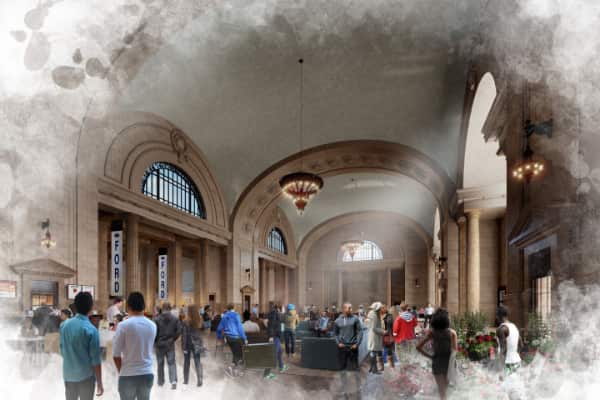
Michigan Must Step Up, Create a Plan and Fund It
Several recent studies have tackled the nuts and bolts of providing new and upgraded train service across the state. So we have lots of insights and data to guide us in building a gold-standard rail network in Michigan.
It’s time to put the insights and data to work. That means moving beyond a list of individual projects to an integrated plan.
Ask Governor Whitmer and your legislators to make regional rail a priority
The Individual Routes
Here are the individual routes that should be included in a statewide plan
The Chicago – Detroit Wolverine Corridor is the Base
The Wolverine Corridor links a wealth of important destinations: commerce, education, medical, entertainment and military.
The Michigan Department of Transportation owns much of the line and is making investments to improve speeds, frequencies and safety.
Combined with its branches, the corridor is primed for success.
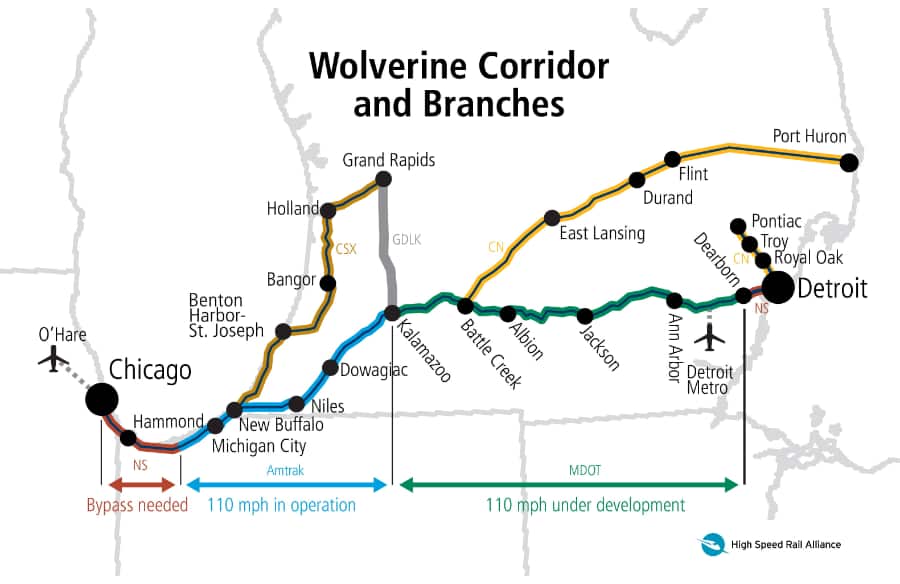
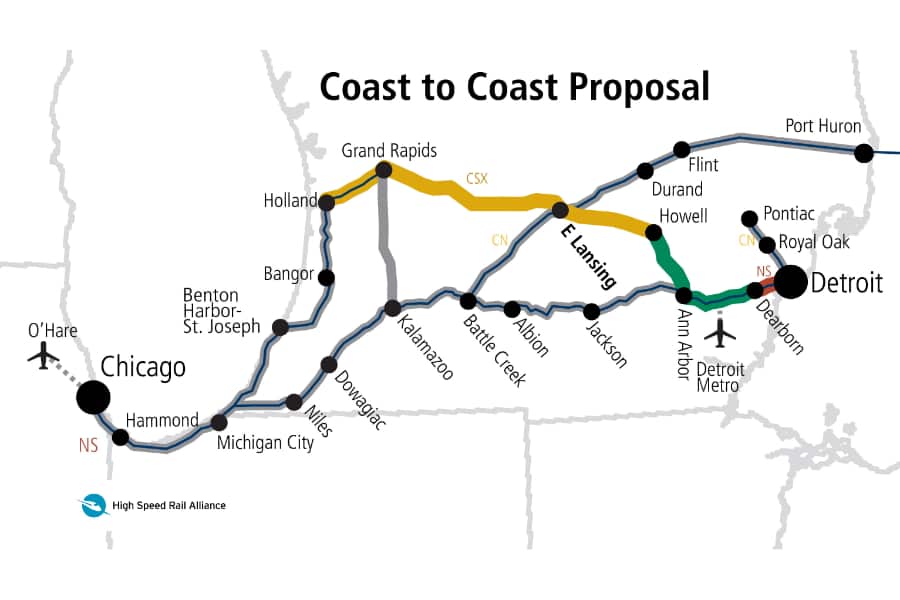
Coast to Coast: Connecting the Economic and Political Capitals
A recent study demonstrated that 110 mph trains linking Detroit, Ann Arbor, Lansing, Grand Rapids and Holland could carry more than 1.5 million passengers by 2040.
By connecting the state’s political, business, cultural and tourism capitals with its major educational hubs, the line would be a dynamo of innovation and economic rejuvenation.
And an opportunity exists for Michigan Department of Transportation to purchase these tracks from CSX to create a passenger focused line.
As on the Wolverine Corridor, hourly service would create commuter service for many city-pairs along the corridor.
A2TC
A line between Ann Arbor and Traverse City would stitch together the growing population centers in the northwest and southeast, attracting workers in both regions and boosting the tourism industry in northwest Michigan.
With trains running at 110 mph, the trip from Ann Arbor to Traverse City would be roughly 3.5 hours—faster and cheaper than driving.
This line is already owned by the Michigan Department of Transportation, making it a prime candidate for being a passenger focused line.
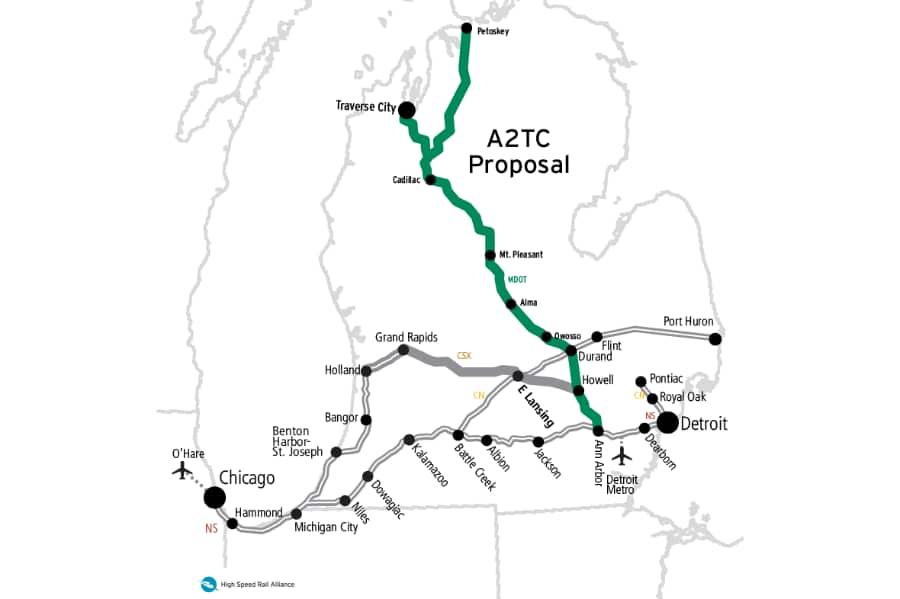
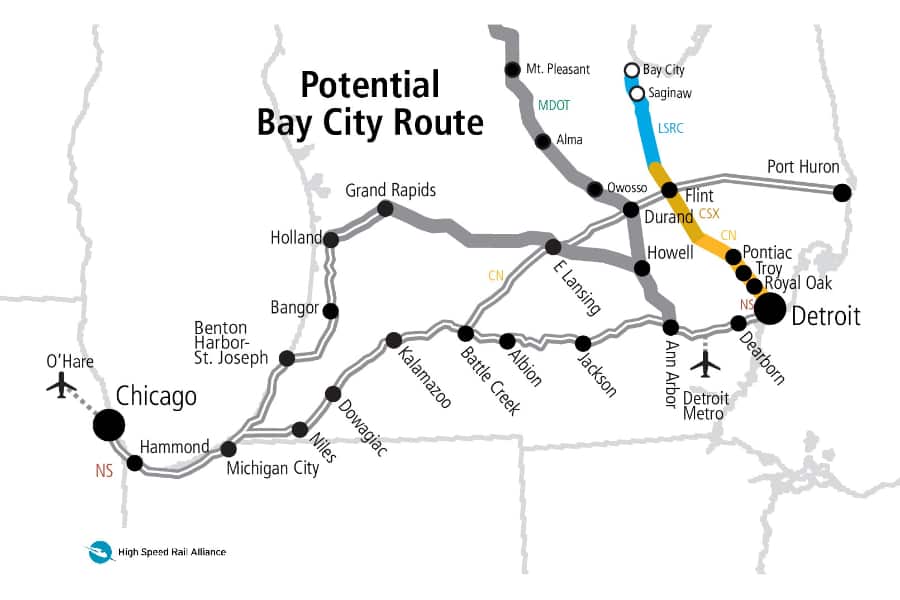
Huron Shore: Bay City – Flint – Pontiac – Detroit
The Bay City – Detroit corridor—a distance of roughly 100 miles—runs through the northern suburbs of Detroit.
It has strong potential for a multi-purpose line that serves commuters in the Detroit suburbs, Flint and Saginaw; tourists and vacationers from Detroit to the Lake Huron region (and vice versa); and people making short trips to Detroit for its shopping, dining, and entertainment options.
The state should commission a study of the line’s feasibility and economic impact.
Mercury: Toledo – Detroit
A line running from Toledo to Detroit and Ann Arbor would meet the strong demand for commuter-rail service in this heavily-traveled corridor. The trains would strengthen connections between three cities that are already closely knit.
This segment should be built for electrified high-speed trains
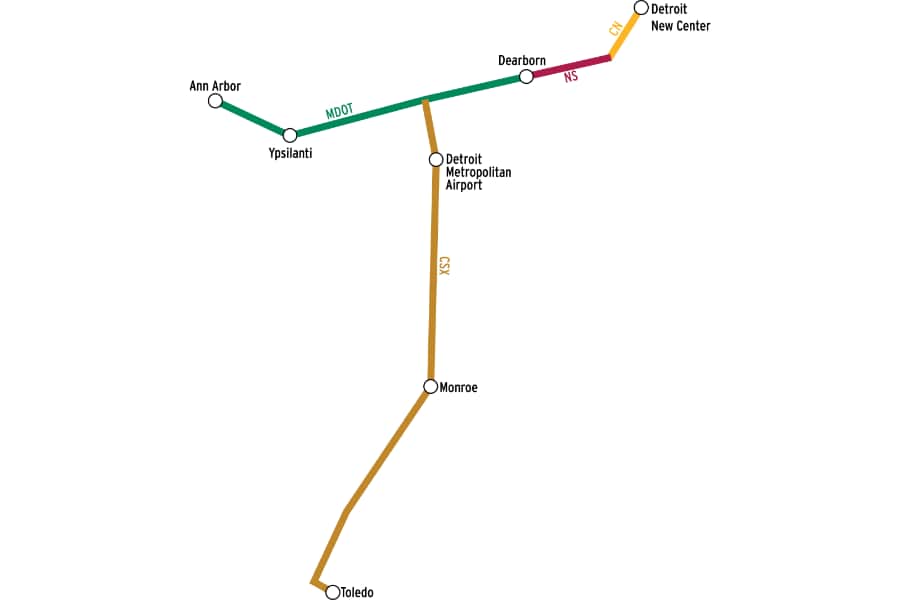
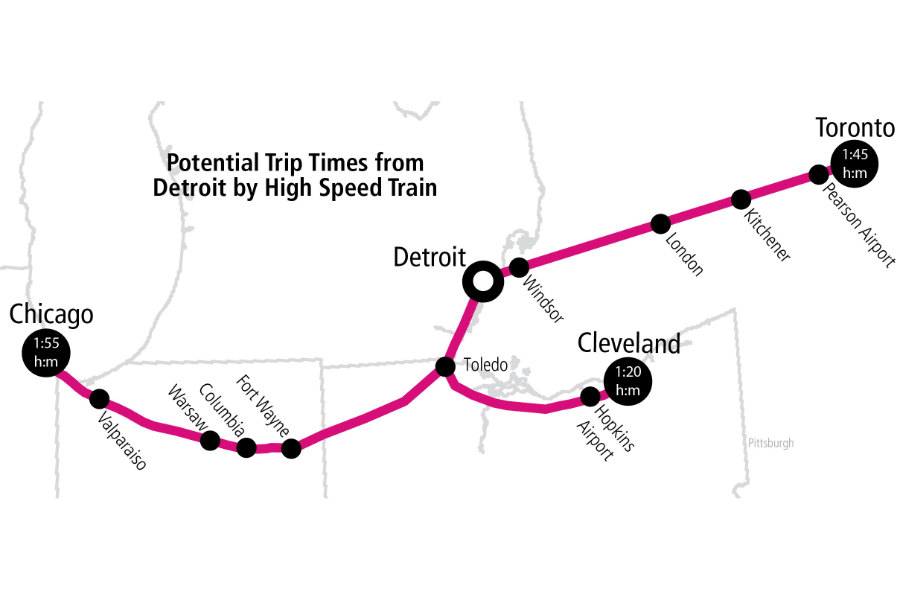
220-MPH High-Speed Rail
A flourishing Amtrak network in Michigan will support a 220-mph high-speed line running from Chicago to Detroit in about two hours and on to Toronto in about 1 hour.
That high-speed line will be a big boost to the state’s competitive advantages as a place to live, work and vacation. Michigan will be the heart of a vibrant corridor of cultural and economic exchange, anchored by two economic and cultural powerhouses.
Michigan Central Station
Ford Motor Company is rebuilding Michigan Central Station, in the heart of downtown Detroit, as a hub for mobility innovation.
It’s a unique, fantastic opportunity to rebuild the train-station portions of the structure. By merging a hub of forward-thinking initiatives with a modern, world-class railroad station, Michigan Central would connect and revitalize the entire region.
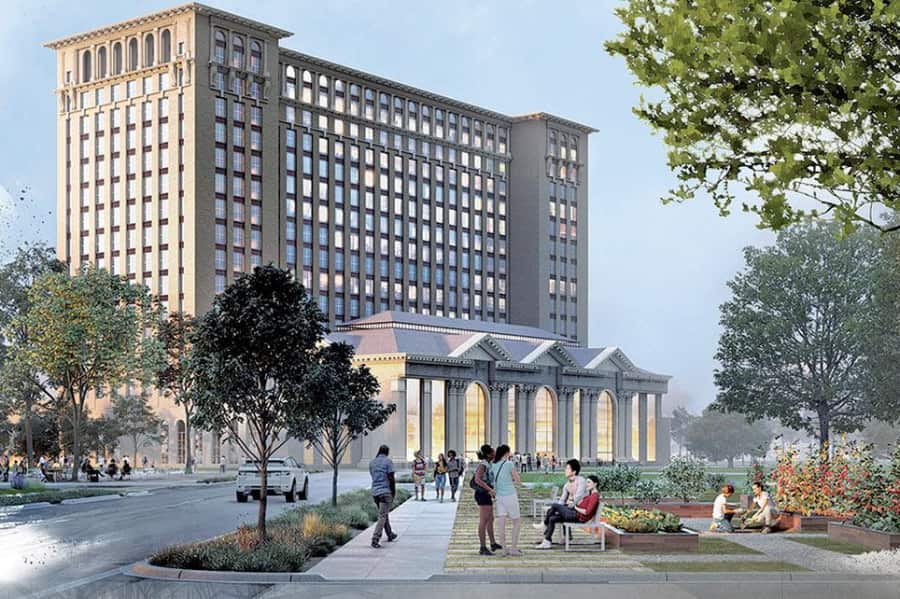
How You Can Help
Please contact your representatives—right now—and tell them Michigan must have fast, frequent, and affordable trains.
Tell them we need the state to take leadership by commissioning a plan to get it done—and by funding the network’s construction. Then share this page with friends, family, and your social network.
Better trains benefit everyone. And small actions, multiplied across thousands of people, will make all the difference.
The Latest from HSRA
Our Latest Blog Posts
Check out the latest news, updates, and high speed rail insights from our blog!
